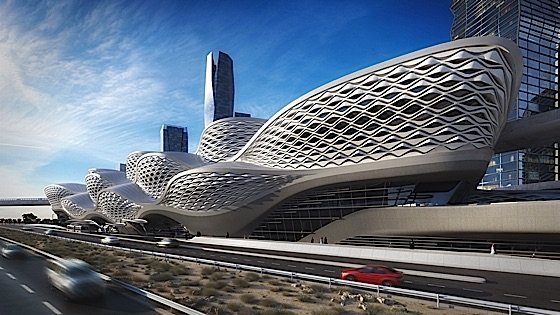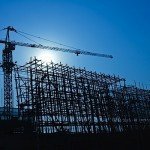Saudi Arabia will invest $27 Billion to build the world’s largest transit system in only five years:
- 176 km of subway with 85 stations
- 1900 km of bus routes with 3000 stations or stops

The City of Riyadh, capital of Saudi Arabia, is building the world’s largest public transit system — in just five years. It will be presenting the project at the Palais des Congrès, in Montreal, Quebec, during the global summit of the Union Internationale des Transports Publics (UITP), May 15 to 17, 2017.
Managed by The High Commission for the Development of Arriyadh (HCDA), this massive project includes six metro lines covering 176 km and 85 stations, in addition to 24 bus routes covering 1,900 km and 3,000 stations and stops. At a total cost of $ 27 billion, it is Saudi Arabia’s first public transportation network and the largest infrastructure project worldwide. The project will be showcased at UITP on Monday May 15 at the 11 AM session, by Dr. Jalal Nafakh, Chief Transportation Planner at HCDA.
The International Association of Public Transport (the English name of UITP) is the biggest public transit gathering in the world and covers all urban and regional transportation modes. The summit has a history dating back to 1886 and takes place every two years. It was last held in Milan in 2015.
“It’s the first time HCDA makes a presentation during a UITP global summit and we are very pleased to do so here in Montreal, Canada“, said Dr. Nafakh, on the conference sidelines. “At HCDA, we have many urban development success stories we are happy to share with our counterparts from other countries”.
Riyadh’s population of 6.5 million today is expected to reach 8.3 million by 2030. Its streets currently handle 9 million car trips daily, making the need for a public transit network imperative. “Initially, we were planning to build two metro lines in seven years. We’ve ended up with six lines, in five years!”, said Nafakh.
Because of the tight time-frame for a project of this size, HCDA had to work in parallel. Three consortia were awarded the project, made up of 35 international firms specializing in construction, design, operations and maintenance. Today, more than 52,000 people are working on the project, in 23 different languages.
For its rolling stock, HCDA commissioned three different global manufacturers: Siemens, Bombardier and Alstom. Mercedes Benz and MAN will provide its fleet of buses. In order to implement its multi-supplier strategy, HCDA had to unify the design of its metro cars and buses, so all manufacturers will provide a finished product with an identical look and feel. In addition, certain cultural elements have been integrated in the interior design of the vehicles.
The new transportation system will include 85 metro stations. To come up with iconic designs for Riyadh’s four most important stations, HCDA launched an international architectural contest. The winners were Zaha Hadid, of London, for the King Abdullah Financial District Station; Gerber Architekten, of Germany, for the Olaya Station; SnØhetta, of Norway, for the Downtown Station and Omrania, of Saudi Arabia, for the Western Station. These innovative stations will change the skyline of Riyadh.
Construction of the project will finish at the end of 2018. Testing of the service will start simultaneously in the last quarter of the same year, with the objective to begin service to the public in the second half of 2019.

































